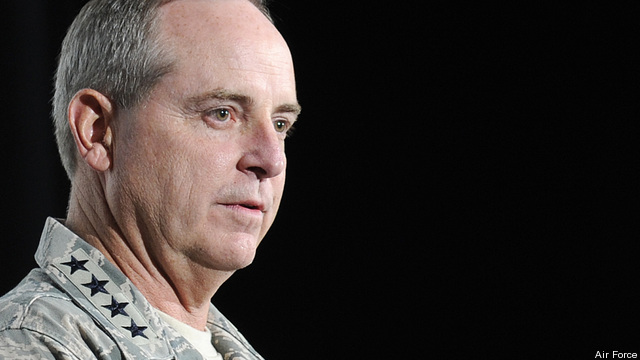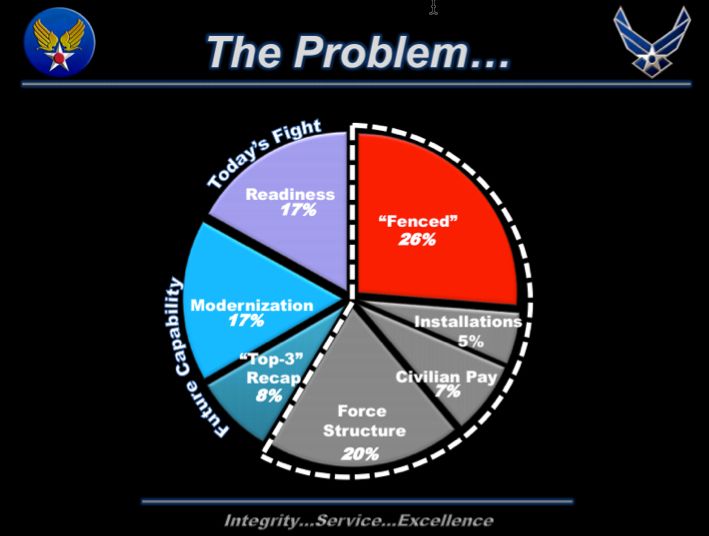UPDATE: NDAA Bill Would Block Retirement of A-10s AND Global Hawks
WASHINGTON: Some members of Congress won’t like this, no matter how compelling the numbers are. But Air Force Chief of Staff Gen. Mark Welsh said this morning that mothballing the beloved A-10 Warthog fleet could save the service a substantial $3.7 billion, a compelling amount of money in the face of the $12 billion the Air Force must save each year for the next decade in the face of sequestration. (Can you hear Sen. Kelly Ayotte’s teeth grinding?)
Welsh — keenly aware members of Congress would read his remarks — made clear no decision has been made yet: “I don’t know what’s going to happen with the A-10.” But the Air Force has done the numbers on the A-10 as well as the KC-10 fleet, which it also may mothball for savings Welsh estimated at $2.5 billion.
UPDATE: All this may be moot if the National Defense Auhtorization Act (NDAA) actually gets passed this year because A-10 supporters (Was that you, Sen Ayotte?) inserted language blocking retirement of both the Warthog and the Global Hawk (Was that you, Rep. McKeon?). The language seems pretty simple and unequivocal:
“None of the funds authorized to be appropriated by this Act or otherwise made available for fiscal year 2014 for the Department of Defense may be obligated or expended to make significant changes to manning levels with respect to covered aircraft or to retire, prepare to re-tire, or place in storage a covered aircraft.”
The bill also requires a report from the Defense Secretary within six months of the bill’s passage that details the needs and costs for ISR aircraft across the Defense Department. The cost per flying hour data is clearly an effort by Northrop Grumman and its supporters to prove that the “U-2 mafia” misrepresented their system’s costs and that Global Hawk is cheaper to operate, something they have been arguing since the Air Force first bruited retiring the Block 30 version of the long loiter drone. Dec. 12 2:35 pm UPDATE ENDS
There’s also the grim calculus of risk. Welsh — a former Warthog pilot and guy who studied ground tactics at the Army’s Army Command and General Staff College, Fort Leavenworth — said destroying the mass of an enemy’s air force (the second echelon, known to most as the reserve) saves the most lives on the ground and at sea, although he also said that close air support (the A-10’s speciality) is very important.
Welsh flashed this slide during his chat this morning, noting how few places he could really pull obey from.
Then the Air Force chief offered these eye-popping — if not completely relevant — comparisons to show just how much the savings could cost the service. The Air Force would “have to stop flying every airplane for two years” or turn off every light and electricity in every air base for 12 years” to save $12 billion each year. “People who think you can get there by cutting bloated staff and bases — it just isn’t going to cut it,” he said
Even with the budget deal trumpeted last night by the Budget Conference Committee, Welsh made it clear the service will still face substantial cuts and will still have to find billions in savings that can’t easily be found. The deal “will not eliminate the impact of sequestration,” Welsh said at a breakfast hosted this morning by former Sen. Jon Kyl at the American Enterprise Institute. “It may mitigate it a bit for the first few years.”
Conservatives in the House and a smattering of liberals are already counterattacking the budget deal. The right swears up and down that the deal will increase deficits (hey guys, remember how you wasted all that money shutting down the federal government?) and the left says the F-35, those bloated staffs and other military extras could easily be cut to keep us within the limits set by sequestration without hurting the military.
(Readers: we will post an op-ed by William Hartung in the next few days offering one version of the liberal camp’s view of the budget deal and the future of defense spending. The Editor)
Navy jet trainer fleet operations remain paused after engine mishap
One week after the incident, a Navy spokesperson says the service is continuing to assess the fleet’s ability to safely resume flight.




























